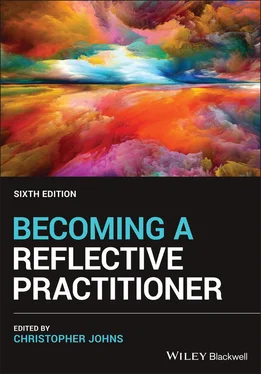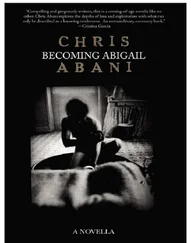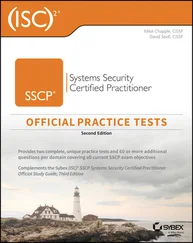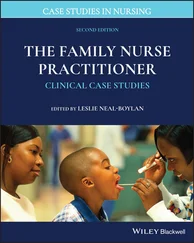Becoming a Reflective Practitioner
Здесь есть возможность читать онлайн «Becoming a Reflective Practitioner» — ознакомительный отрывок электронной книги совершенно бесплатно, а после прочтения отрывка купить полную версию. В некоторых случаях можно слушать аудио, скачать через торрент в формате fb2 и присутствует краткое содержание. Жанр: unrecognised, на английском языке. Описание произведения, (предисловие) а так же отзывы посетителей доступны на портале библиотеки ЛибКат.
- Название:Becoming a Reflective Practitioner
- Автор:
- Жанр:
- Год:неизвестен
- ISBN:нет данных
- Рейтинг книги:5 / 5. Голосов: 1
-
Избранное:Добавить в избранное
- Отзывы:
-
Ваша оценка:
- 100
- 1
- 2
- 3
- 4
- 5
Becoming a Reflective Practitioner: краткое содержание, описание и аннотация
Предлагаем к чтению аннотацию, описание, краткое содержание или предисловие (зависит от того, что написал сам автор книги «Becoming a Reflective Practitioner»). Если вы не нашли необходимую информацию о книге — напишите в комментариях, мы постараемся отыскать её.
Becoming a Reflective Practitioner
Becoming a Reflective Practitioner
Becoming a Reflective Practitioner — читать онлайн ознакомительный отрывок
Ниже представлен текст книги, разбитый по страницам. Система сохранения места последней прочитанной страницы, позволяет с удобством читать онлайн бесплатно книгу «Becoming a Reflective Practitioner», без необходимости каждый раз заново искать на чём Вы остановились. Поставьте закладку, и сможете в любой момент перейти на страницу, на которой закончили чтение.
Интервал:
Закладка:
Yet, it is one thing to consider how to respond differently. It is quite another to act in accordance. The creative tension between vision and reality.
The practitioner must respond to four challenges:
Am I skilful and knowledgeable enough to respond differently?
Do I have the right attitude?
Am I powerful enough to respond differently?
Am I poised enough to respond differently?
Am I Skilful and Knowledgeable Enough to Respond Differently?
In envisaging more effective ways of responding the practitioner must see beyond their previous horizon of responses and ask whether their repertoire of responses is adequate and skilful enough. It opens the door to seek new skills and knowledge and challenge the appropriateness of previous ways of responding.
Practitioners tend to respond based on three criteria:
Responses they have used before.
Responses that have worked before.
Responses they are comfortable using.
These criteria reflect a habitual and unreflective practice that may not lead to desirable practice. Other ways may be more appropriate that the practitioner has yet to become aware of. It is a question of opening the mind to possibilities that requires humility that I might not always get it right.
Do I Have the Right Attitude?
Understanding and shifting our attitudes is not easy as often we are not even aware of them, buried as they are deep within ourselves. Research (Stockwell 1972; Johnson and Webb 1995; Trexler 1995) suggests that we are less likely to relate to people who are different from us for whatever reason epitomised in the phrase ‘the unpopular patient’. It is a fact of life and they must be confronted if we are to be truly person‐centred. Through reflection, we become aware of our attitudes and whether they are appropriate to hold in light of responding differently in tune with our vision. Attitudes such as racism are deeply embedded in society. Practitioners may aspire to responding to people with equality and cultural safety but making it a reality requires a massive radical shift that may seem beyond the individual healthcare practitioner. The challenge is to make a personal difference through one’s actions and, in doing so, confronting and influencing colleagues towards ensuring cultural safety can become a collective organisational reality. The time is currently ripe to stand up and voice this message. Perhaps wearing a ‘Black Lives Matter’ badge will help just as professional footballers are wearing this message on the backs of their football shirts. 7 Practitioners can take the moral high ground and espouse what person‐centred practice really means in terms of equality and cultural safety.
Am I Powerful Enough to Respond Differently?
It choosing to respond differently may well disturb normal practice with consequences for working with others. Reflection is always an analysis of the way power works within practice notably the way it constitutes relationships. To respond differently may demand an assertive voice, whereby developing an assertive voice becomes a focus of reflection. Reflective tools such as ‘the assertive action ladder’ offer a step by step developmental approach ( Table 4.3). The effective practitioner is an assertive practitioner and yet, in a culture where healthcare practitioners such as nurses are not expected to be assertive, asserting self may cause conflict. Yielding (step 10) is a strength, not a weakness. It is an awareness that pushing an issue may have negative consequences. Better to live and fight another day. Retreat with dignity with one’s integrity intact. Blackwolf and Jones (1996, p. 281) note:
Yielding is not passive. It is being sensitive to energy flows and extending wisdom. Allow the winds of change to flow through you rather than against you. Be flexible with what is happening today. Yield to the circumstance, yet rooted with who you are.
Reflection is always concerned with expanding one’s autonomy in order to respond differently. The practitioner weighs up the consequences and plans to succeed. Yet a warning – claiming autonomy to respond differently may challenge normal power relationships with other colleagues, especially those perceived to hold power over you with threats of sanction if you step out of line and forget your place within the system. Autonomy is a contested space that others will also claim the power to act especially where issues of authority are blurred. Reflection helps the practitioner come to appreciate the nature and scope of their power. Nothing gets changed if we afraid to act. In contemplating taking action to bring about organisational change, the practitioner must envisage her or himself as a change agent and become adept at change strategies. 9
TABLE 4.3 The Becoming Assertive Action Ladder 8
| 10 | Treading the fine line between pushing and yielding |
| 9 | Playing the power game |
| 8 | Staying in adult mode |
| 7 | Being communicatively skilful |
| 6 | ‘Just do it!’ (JDI) |
| 5 | Creating the optimum conditions to assert self |
| 4 | Making a good argument |
| 3 | Authority to assert self |
| 2 | Ethically right to assert self |
| 1 | Feeing the need to assert self |
Am I Poised Enough to Respond Differently?
Reflection is always concerned with the development of poise – the ability to know and manage feelings. The practitioner has reflected to understand their feelings. This cue now prompts them to consider how they might manage their feelings in order to respond differently. They may need to confront any lurking negative thoughts, fears, or feelings that seem to get in the way. In Buddhism, this scrutiny is called A pramada, what I term ‘ the guard at the gate of the senses’ ever watchful for any negative mental events that may influence responding differently (Sangharakshita 1998). It is an aspect of being mindful acting like a diligent censor, keeping the mind alert, and moving towards the vision which the practitioner desires.
Practitioners often wear metaphoric suits of armour to protect themselves from the anxiety and emotions of caring and the suffering of others. Jade, one of the primary nurses at Burford Hospital said ‘I don’t come to work dressed in protective armour’ (Johns 1993). Dewey (1933, p. 30) observed:
Unconscious fears also drive us into purely defensive attitudes that operate like coats of armour – not only to shut out new conceptions but even to prevent us from making new observations.
Dewey believed that anxiety limited the practitioner’s ability to learn through experience. The professional is closed to protect self rather than open to possibility. ‘Armour’ is akin to professional detachment.
Logstrup noted the radicality of the ethical demand (1997, p. 44):
The demand asks me to take care of the other person’s life not only when it strengthens me but also when it is very unpleasant because it intrudes disturbingly into my own existence.
Hence, why we might strive to meet the demand to care for the life of the other, it opens us to our own vulnerability and why we may wear suits of armour to survive.
Coming to an understanding of one’s vulnerability begins a journey to unlearn defence mechanisms and learn to cope with it more effectively. The practitioner may need to review and develop their support mechanisms within the practice. To be able to say – ‘I’m struggling‘ without being judged incompetent. In my experience, there is little organisational sensitivity to the profound nature of caring work. The lack of recognition of emotional labour (James 1989; Bolton 2000) that somehow emotional work is natural women’s work, and therefore is unskilled doesn’t need to be taught, and is not valued, when emotional work is the greatest gift nurses can offer patients. Taylor (1992, p. 1042) noted a theme within the literature of how nurses have been dispossessed ‘of their essential humanness as human beings and as people, by emphasising their professional roles and responsibilities’. Taylor draws attention to the fact that nurses are human too and, as such, are vulnerable to the same issues that face their patients and families. The lack of recognition of humanness in nursing through a focus on roles and responsibilities has led practitioners to strive to be something they were clearly struggling to cope with. Consequently, they risk becoming alienated from themselves in their efforts to cope with and live with the contradictions in their lives. Jourard (1971) noted that such striving damages ‘the self’ and reinforces the need to cope in a vicious downward spiral of self‐destruction towards burnout and a state of anomie.
Читать дальшеИнтервал:
Закладка:
Похожие книги на «Becoming a Reflective Practitioner»
Представляем Вашему вниманию похожие книги на «Becoming a Reflective Practitioner» списком для выбора. Мы отобрали схожую по названию и смыслу литературу в надежде предоставить читателям больше вариантов отыскать новые, интересные, ещё непрочитанные произведения.
Обсуждение, отзывы о книге «Becoming a Reflective Practitioner» и просто собственные мнения читателей. Оставьте ваши комментарии, напишите, что Вы думаете о произведении, его смысле или главных героях. Укажите что конкретно понравилось, а что нет, и почему Вы так считаете.












